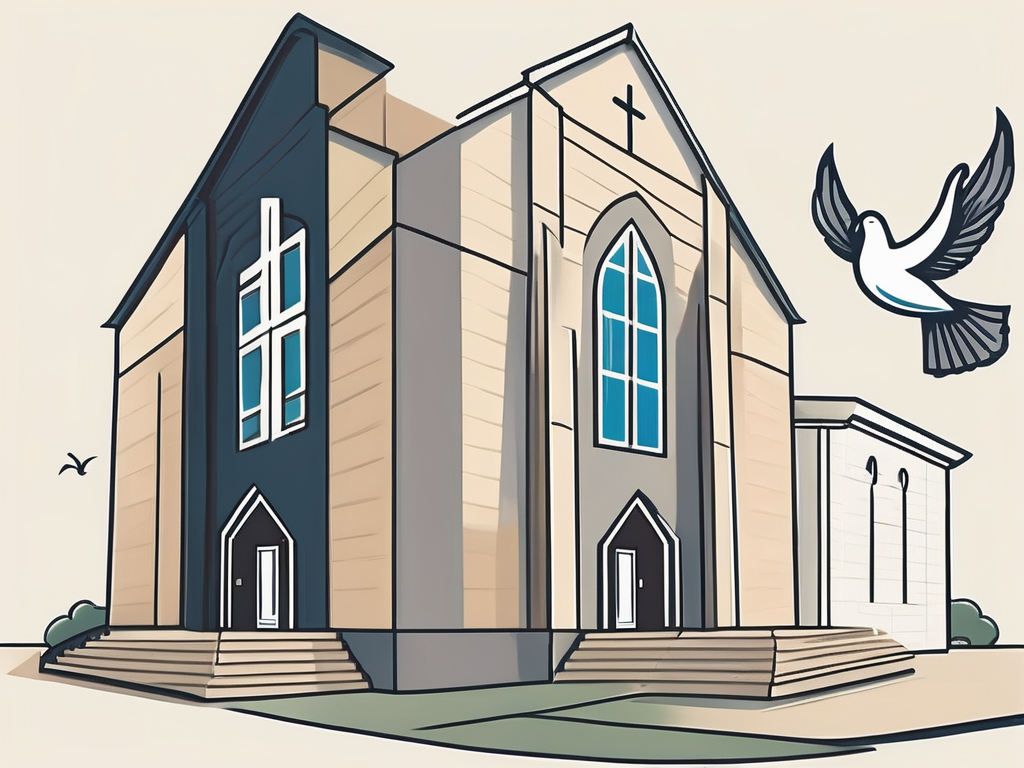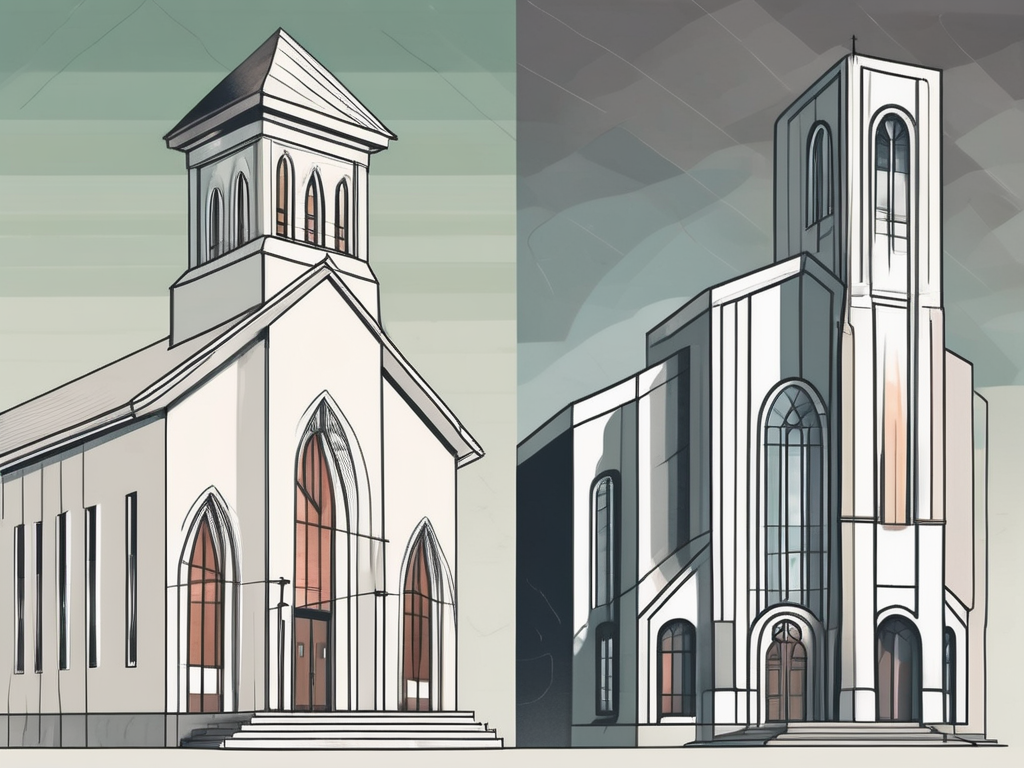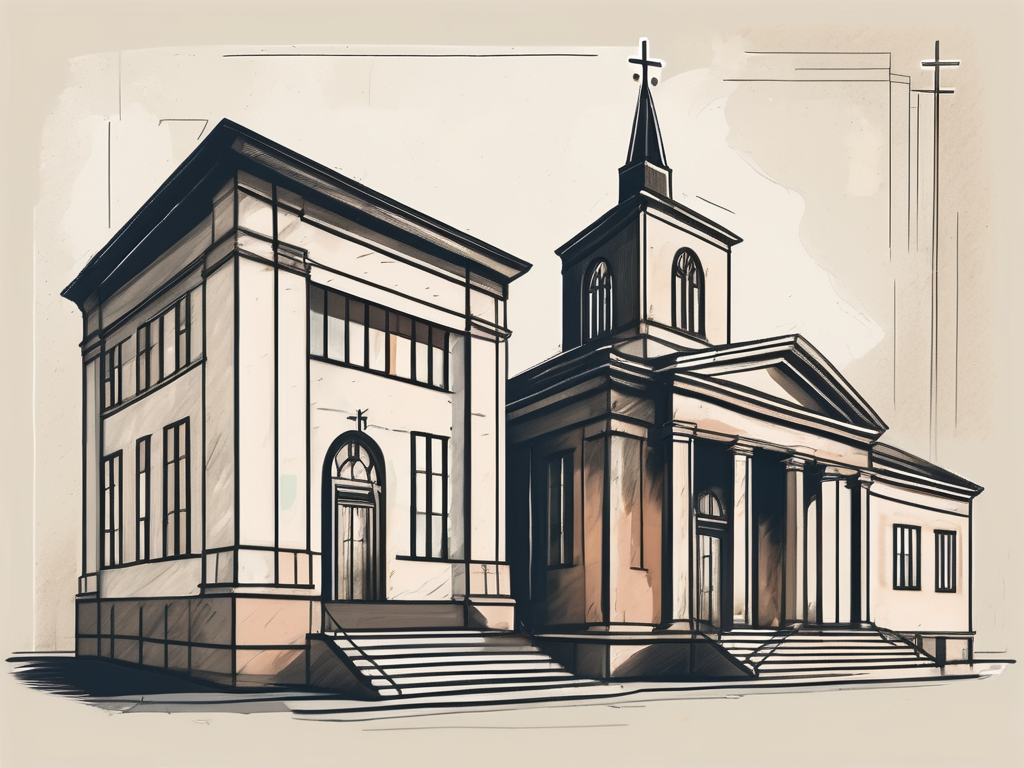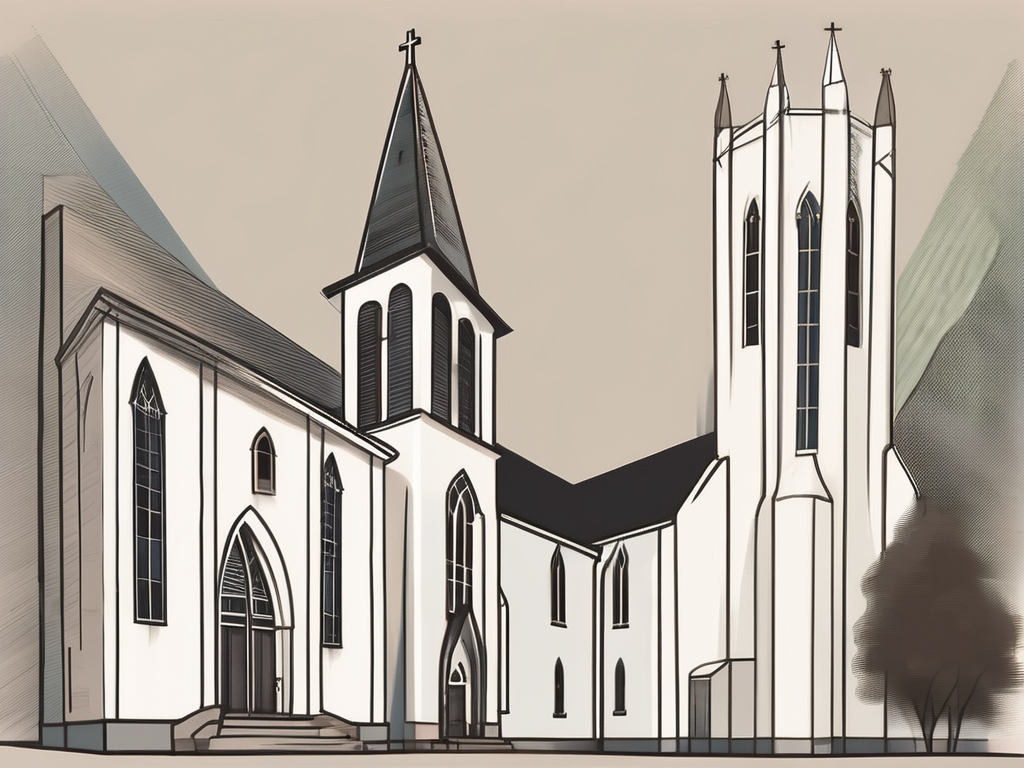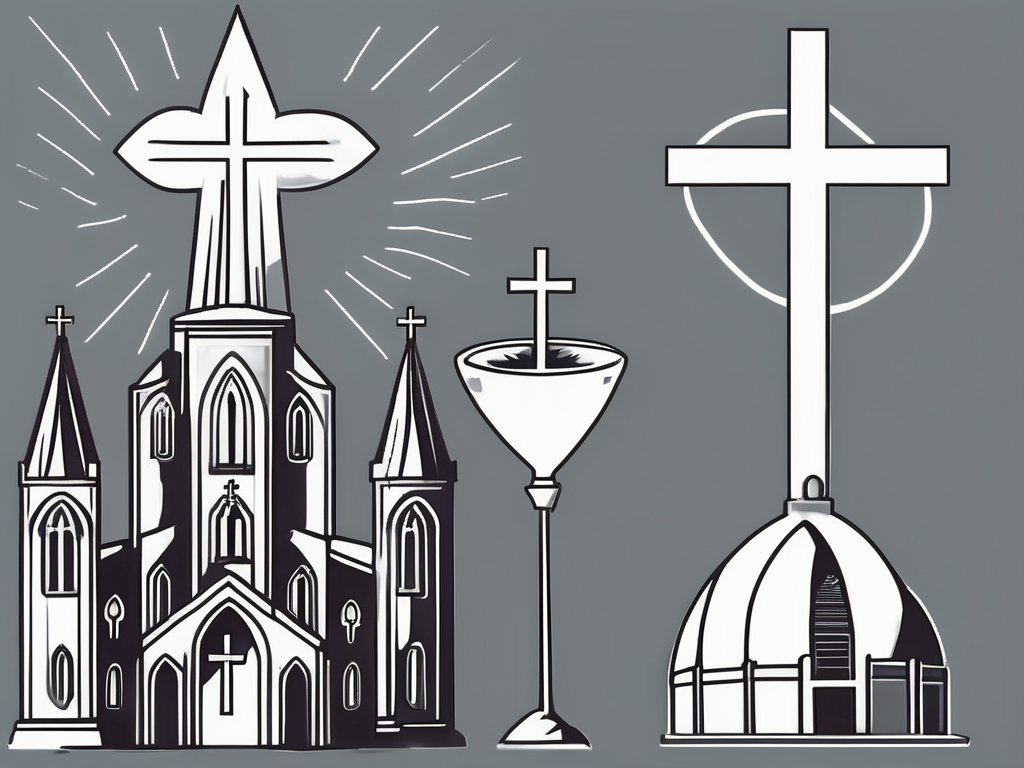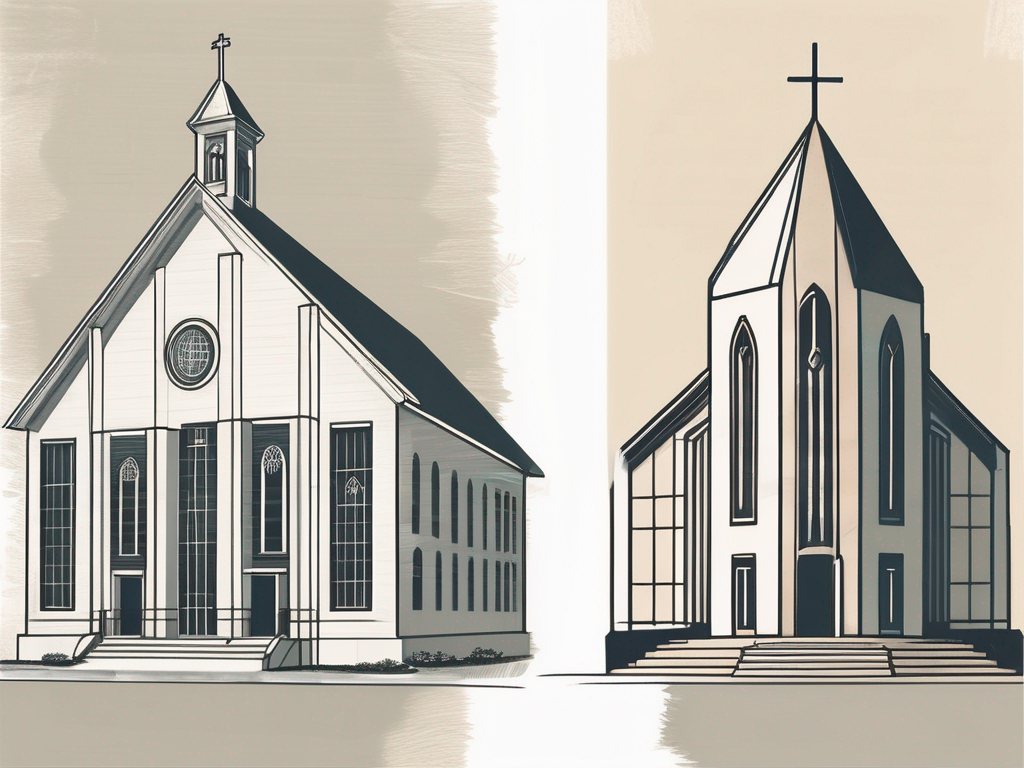Are you curious about the differences between Seventh Day Adventists and Presbyterians? In this article, we will explore the basics of these two religious denominations, their theological divergences, worship styles, organizational structures, and their social and cultural influences. Let’s dive in and discover what sets them apart!
Understanding the Basics: Seventh Day Adventist and Presbyterian
Before we delve into the specifics, let’s start by understanding the origins of these two groups.
The Origins of Seventh Day Adventist and Presbyterian
Seventh Day Adventists trace their origins back to the early 19th century, with the teachings of William Miller and his belief in the imminent return of Jesus Christ. This movement ultimately led to the establishment of the Seventh Day Adventist Church, which places a strong emphasis on the second coming of Christ and the observance of the Sabbath on Saturdays.
Presbyterians, on the other hand, have their roots in the Protestant Reformation of the 16th century. Their beliefs are grounded in the teachings of John Calvin, emphasizing the sovereignty of God and the authority of Scripture. Presbyterianism is characterized by a representative form of church government led by elders.
Seventh Day Adventists and Presbyterians have distinct historical backgrounds that have shaped their beliefs and practices.
Key Beliefs and Practices
When it comes to key beliefs and practices, both Seventh Day Adventists and Presbyterians hold a rich and robust set of doctrines.
Seventh Day Adventists believe in the inspiration and authority of the Bible, the existence of a triune God, the importance of faith in Jesus Christ, and the observance of the seventh-day Sabbath. They also place a strong emphasis on health and wellness, advocating for a vegetarian diet and abstinence from harmful substances.
Presbyterians, on the other hand, share a commitment to the authority of Scripture but also affirm the importance of the creeds and confessions of the Reformed tradition. They believe in the sovereignty of God in salvation, the need for repentance and faith, and the role of the sacraments, including baptism and the Lord’s Supper, in the life of the Church.
Both Seventh Day Adventists and Presbyterians have unique beliefs and practices that shape their identity as religious communities.
The Role of Scripture in Both Denominations
Both Seventh Day Adventists and Presbyterians hold Scripture in high regard, but they interpret it through different lenses.
Seventh Day Adventists believe in the principle of “sola scriptura,” emphasizing the Bible as the ultimate authority in matters of faith and practice. They also value the writings of Ellen G. White, one of the founders of the Adventist Church, as inspired and authoritative.
Presbyterians, while acknowledging the importance of the Bible, also recognize the role of tradition and reason in interpreting Scripture. They draw upon the insights of theologians and scholars throughout history to better understand God’s Word.
Both Seventh Day Adventists and Presbyterians approach the interpretation of Scripture with their own unique perspectives, seeking to understand and apply its teachings in their respective contexts.
Theological Differences Between Seventh Day Adventist and Presbyterian
Views on Salvation
When it comes to views on salvation, Seventh Day Adventists and Presbyterians have differing perspectives.
Seventh Day Adventists believe that salvation is a process that includes faith in Jesus Christ, obedience to God’s commandments, and a personal relationship with God. They emphasize the need for ongoing spiritual growth and sanctification.
Seventh Day Adventists believe that salvation is not a one-time event but a lifelong journey. They believe that faith in Jesus Christ is essential for salvation, but it is not enough on its own. They emphasize the importance of obedience to God’s commandments as a demonstration of faith and a response to God’s grace. They see obedience as a way to grow in holiness and to develop a closer relationship with God.
On the contrary, Presbyterians believe in the doctrine of “justification by faith alone.” They assert that salvation is solely a result of God’s grace, received through faith in Jesus Christ, and cannot be earned through works or personal righteousness.
Presbyterians believe that faith in Jesus Christ is the only requirement for salvation. They believe that humans are incapable of earning salvation through their own efforts and that it is only by God’s grace that they can be saved. They emphasize that salvation is a gift from God and cannot be achieved through good works or personal merit.
Perspectives on the Sabbath
One of the significant distinctions between Seventh Day Adventists and Presbyterians lies in their perspectives on the Sabbath.
Seventh Day Adventists observe the Sabbath on Saturdays, as they believe it to be a sacred day of rest and worship ordained by God. They view Sabbath observance as a sign of loyalty to God and a time for spiritual rejuvenation.
Seventh Day Adventists believe that the Sabbath is a special day set apart by God for rest and worship. They believe that observing the Sabbath on the seventh day of the week, as commanded in the Bible, is an essential part of their faith. They see it as a time to disconnect from the busyness of everyday life and to focus on their relationship with God. They engage in worship services, spend time with their families, and participate in activities that bring them closer to God.
Presbyterians, while recognizing the importance of worship and rest, do not strictly observe the Sabbath as a particular day of the week. They emphasize the principle of “Sabbath rest” rather than a specific day, encouraging believers to find rest and worship in their daily lives.
Presbyterians believe that the concept of the Sabbath is not limited to a specific day but extends to the idea of finding rest and renewal in God. They believe that believers should strive to live a balanced life, incorporating regular times of rest and worship into their routines. They see the Sabbath as a reminder to prioritize their relationship with God and to find spiritual refreshment in their daily lives.
Beliefs about the Afterlife
Both Seventh Day Adventists and Presbyterians hold particular beliefs about the afterlife.
Seventh Day Adventists believe in the concept of soul sleep, where the consciousness of individuals ceases at death until the resurrection. They look forward to the Second Coming of Christ, the final judgment, and the establishment of God’s eternal kingdom.
Seventh Day Adventists believe that after death, individuals enter a state of unconsciousness known as “soul sleep.” They believe that the dead are not aware of anything and remain in this state until the Second Coming of Christ. They anticipate a future resurrection, where the righteous will be raised to eternal life, and the wicked will face judgment and eternal separation from God.
Presbyterians hold a belief in an immediate afterlife, with the souls of the departed entering into the presence of God or awaiting the resurrection. They affirm the hope of resurrection and the ultimate restoration of all things in Christ.
Presbyterians believe that after death, the souls of believers enter into the presence of God, experiencing a state of joy and peace. They believe that the souls of the departed are conscious and aware of their surroundings. They also hold the belief in the resurrection of the dead, where believers will be reunited with their glorified bodies and experience eternal life in the presence of God. They believe in the ultimate restoration of all things in Christ, where God’s kingdom will be fully realized.
Worship Styles: A Comparison
Seventh Day Adventist Worship Practices
In Seventh Day Adventist services, you will typically find a blend of worship elements, including prayer, congregational singing, Scripture reading, and teaching. They often prioritize a reverent and reflective style of worship, focusing on the Word of God and the teachings of the Bible.
Seventh Day Adventist worship services are known for their emphasis on the Sabbath, which is observed from Friday evening to Saturday evening. This dedicated time of worship and rest allows Seventh Day Adventists to deepen their connection with God and reflect on their faith.
During their services, Seventh Day Adventists often incorporate hymns that reflect their beliefs and values. These hymns are carefully selected to inspire worshipers and reinforce key theological concepts. The congregation actively participates in the singing, creating a sense of unity and shared devotion.
In addition to congregational singing, Seventh Day Adventist worship services include moments of prayer. These prayers are an opportunity for individuals to communicate with God, express their gratitude, seek guidance, and offer intercessions for others. The prayers are often led by the pastor or other church leaders, but there may also be opportunities for members of the congregation to share their own prayers.
Scripture reading is an integral part of Seventh Day Adventist worship. The selected passages are typically chosen to align with the sermon or teaching that follows. The congregation listens attentively as the Word of God is proclaimed, seeking to gain a deeper understanding of biblical truths and how they can be applied to their lives.
The teaching component of Seventh Day Adventist worship services is highly valued. Pastors and guest speakers deliver sermons that are rooted in biblical principles and provide practical guidance for living a faithful life. These sermons often explore topics such as personal growth, community engagement, and the importance of maintaining a strong relationship with God.
Presbyterian Worship Practices
Presbyterian worship services are characterized by a structured order of worship, including prayers, hymns, Scripture readings, and a sermon. They place a strong emphasis on the preaching of God’s Word and an active participation of the congregation in the worship experience.
Presbyterian worship services typically follow a liturgical format, which provides a sense of continuity and familiarity for the congregation. The order of worship may vary slightly between different Presbyterian churches, but there are common elements that are present in most services.
Prayers play a significant role in Presbyterian worship. These prayers can take various forms, including prayers of confession, thanksgiving, intercession, and dedication. They are led by the pastor or other church leaders, but there may also be opportunities for members of the congregation to offer their own prayers.
Hymns are an essential part of Presbyterian worship. The congregation joins together in singing hymns that reflect their faith and express their devotion to God. The selected hymns often align with the theme of the sermon or the liturgical season, creating a cohesive worship experience.
Scripture readings are a central component of Presbyterian worship. The readings are carefully chosen to provide a biblical foundation for the sermon and to guide the congregation in their understanding of God’s Word. The congregation listens attentively as the Scriptures are read aloud, seeking to discern the message that God has for them.
The sermon holds a prominent place in Presbyterian worship services. The pastor delivers a message that is grounded in the Scriptures and relevant to the lives of the congregation. The sermon aims to provide spiritual nourishment, challenge, and encouragement, inviting the congregation to reflect on their faith and apply biblical principles to their daily lives.
Presbyterian worship services also often include moments of silence and reflection. These pauses allow worshipers to meditate on the Word of God, offer personal prayers, and experience a deeper connection with God. The congregation is encouraged to actively engage in the worship experience, responding to the prayers, hymns, and sermon with their hearts and minds.
Organizational Structure and Leadership
Leadership Structure in the Seventh Day Adventist Church
The Seventh Day Adventist Church has a hierarchical structure with a General Conference serving as the highest governing body. The leadership includes a president, vice-president, and other administrative officers who oversee various divisions and unions around the world. The local churches are led by pastors and elders.
Leadership Structure in the Presbyterian Church
Presbyterian churches are governed by a representative form of church government. Elders, elected by the congregation, play a significant role in making decisions and providing spiritual leadership. The highest governing body is typically known as the General Assembly, which includes representatives from presbyteries and councils.
Social and Cultural Impacts of Both Denominations
Seventh Day Adventist’s Influence on Society
The Seventh Day Adventist Church has had a profound impact on society through its emphasis on health and wellness. Adventists are known for promoting vegetarianism, healthy lifestyle choices, and medical missions. Their holistic approach to health has inspired many to adopt healthier habits, and their charitable endeavors have provided support and care to communities around the world.
Presbyterian’s Influence on Society
Presbyterians have also made significant contributions to society. Through their commitment to education, many Presbyterian-founded institutions and schools have played vital roles in shaping the intellectual and moral development of individuals. The Presbyterian faith has fostered social justice initiatives, advocating for human rights, racial equality, and caring for the marginalized and vulnerable in society.
In conclusion, while Seventh Day Adventists and Presbyterians may have some similarities in their commitment to the authority of Scripture and faith in Jesus Christ, they also have distinct theological perspectives, worship practices, organizational structures, and social influences. Understanding these differences and appreciating the unique contributions of each denomination can enrich our understanding of the diversity within the Christian faith. So, whether you find yourself worshiping on Saturdays or Sundays, let us celebrate the beautiful tapestry of Christian traditions that bring us closer to God and one another.
